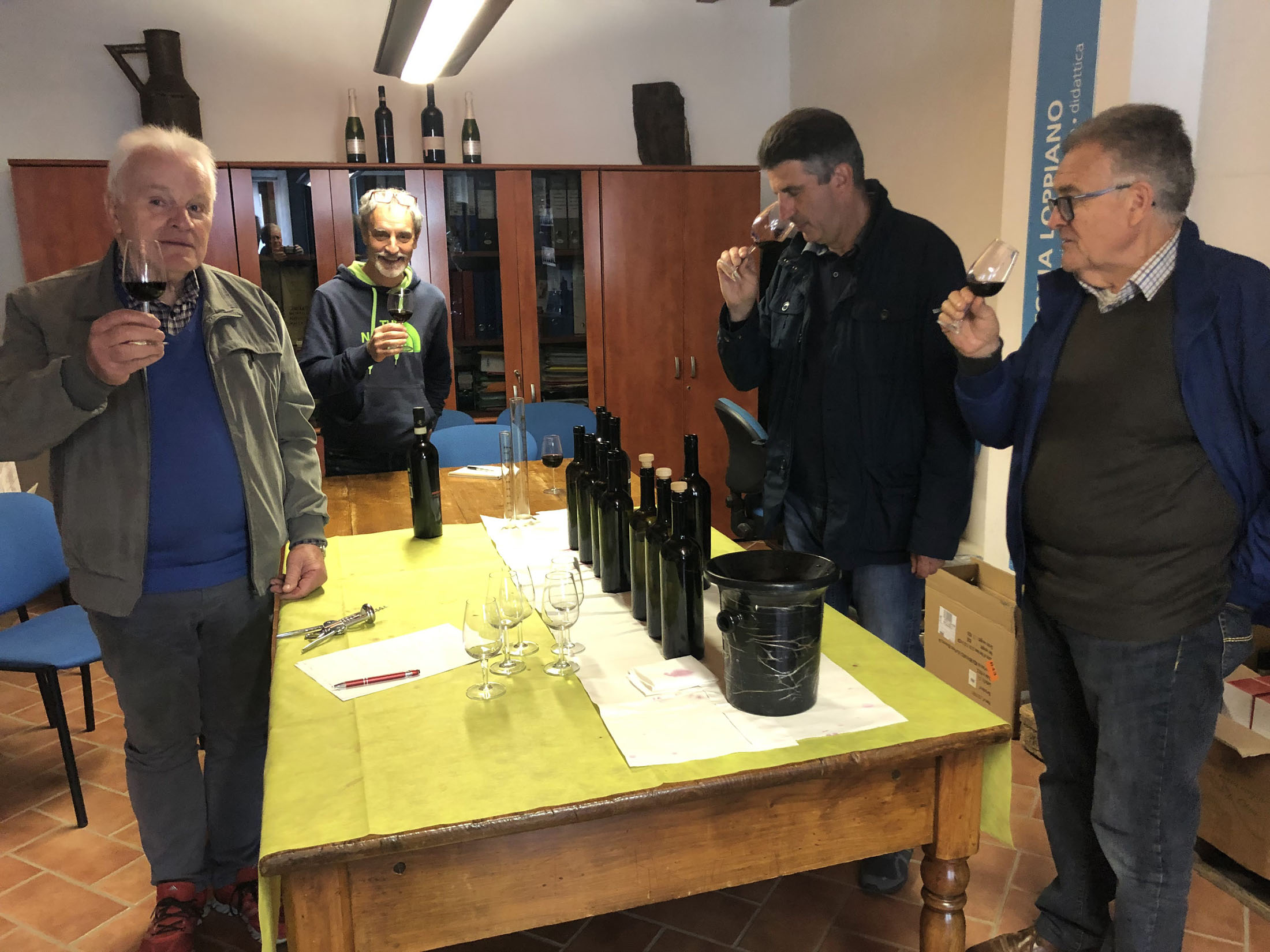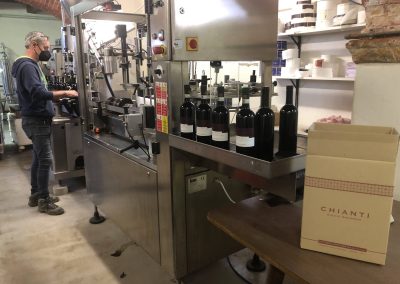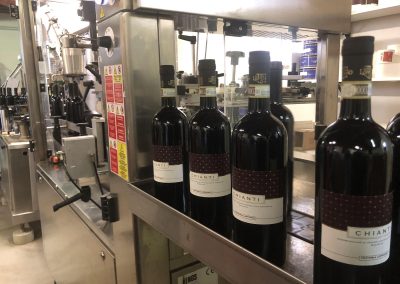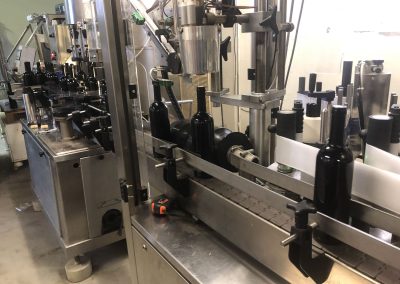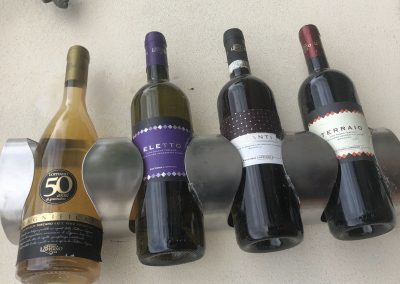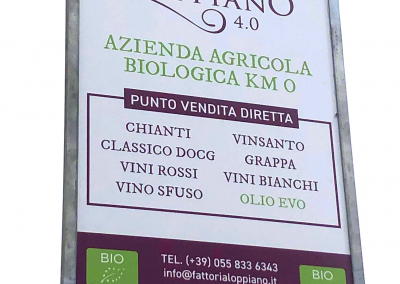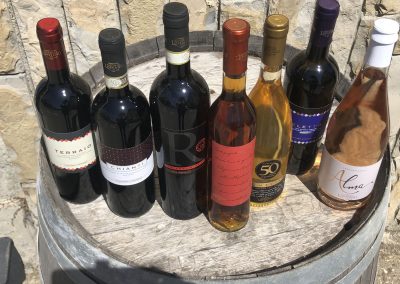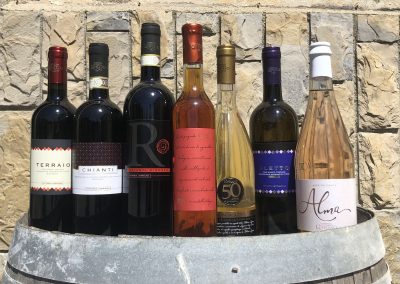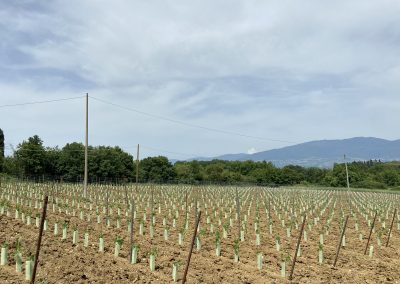Careful and innovative work on the vineyards at Loppiano has produced its effects on the wines, which have always been organic. Some from 2021 are already on the market, with a good success of the sparkling rosé Alma. Others are being refined in tanks and in bottles. And for the reds, the winemaker has made a bold proposal.
A double row of open bottles are on the table. Around them are experts from the Loppiano Farm, led by the winemaker. The moment has its own solemnity, almost a ritual – that of examining the quality of each white and each red wine in production. For the most part, they are fruit of the last harvest, but some wines are from 2020 like Chianti docg (controlled and guaranteed designation of origin), approved by the Chianti Consortium. Now the bottling of another 5,000 bottles (in total, 13,000) is underway, in which the wine will be further refined and will be on sale in August.
The awaited event, however, focuses on the wines of the 2021 vintage. Winemaker Massimo Motroni picks up the bottle, pronounces the name of the wine, and pours it into the connoisseurs’ outstretched goblets. Everyone observes the color of the wine, inhales the scent before relying on the palate. Glances are crossed, there are smiles of appreciation, a few words leak out, but everything is suspended awaiting the winemaker’s opinion.
“Wines of excellent quality,” Motroni finally says, “very much expresses the characteristics of each grape variety.” The others approve. The winemaker further comments, “They are reserved and somewhat austere wines, so they must be discovered, because they do not immediately flaunt all their qualities.” Previously, every single wine tasting was followed by careful examination. The white Eletto 2021 is already on the market, and a new batch will be bottled later, totaling 4 thousand bottles. The latest addition, Alma, a sparkling rosé, is garnering good sales success. The Magnificat,, a fragrant white for enthusiasts, has potential to last in time. “The whites are coming along really well. They seem perfect for this land,” comments Motroni.
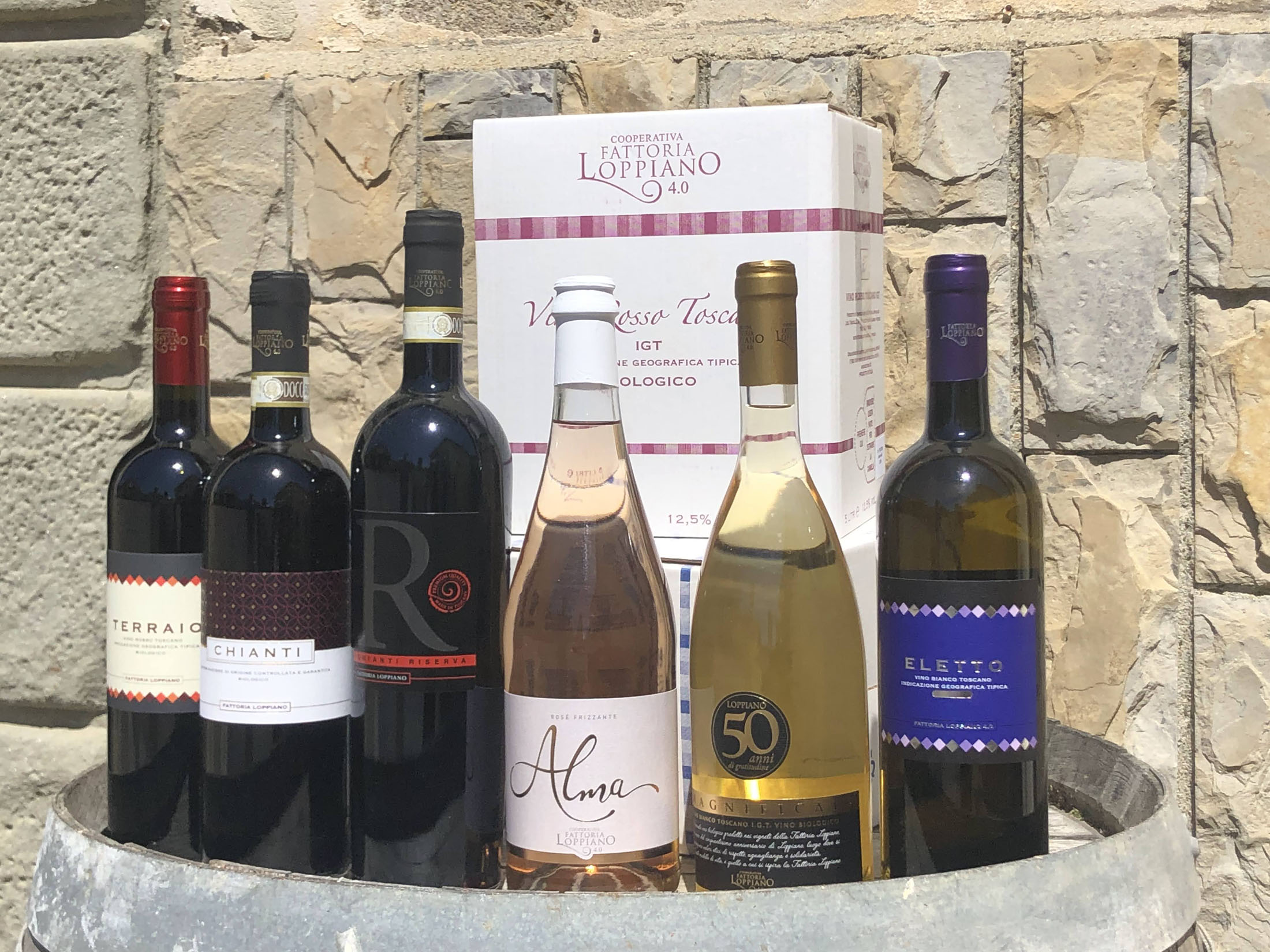
Quality, it is known, is the result of passionate and painstaking work. And the dedication of the past two years is beginning to be rewarded. Motroni points out that the harvest was done in a workmanlike manner, that the management of the vineyards respected textbook parameters, that innovative systems were adopted for slow-release organic fertilization, that a selected yeast (not genetically modified) was used which stimulates the plants’ defense mechanisms like a vaccine against vine and bunch fungus, and that a reduced use of copper was therefore used, under the parameters of the European Union. All this has helped to produce real benefits on wine quality. At the same time, a new vineyard equal to one hectare has been planted (in production in two years), while a very old vineyard of two hectares is in the process of being uprooted and will be replaced by new vines in early 2023, over time.
“With the tradition of the Loppiano vineyards, the wines are born organic in the vineyard and then in the winery we preserve the good that nature produced.” The winemaker is visibly satisfied. And no one thinks it’s the effect of the wine. Everyone savors, but no one swallows. All the more so at 10 a.m. The quality of the reds elicits a somewhat bold proposal. “Keep them aging in the tank,” Motroni says., “We bottle the Chianti after 12 months, the rest after 18.”

